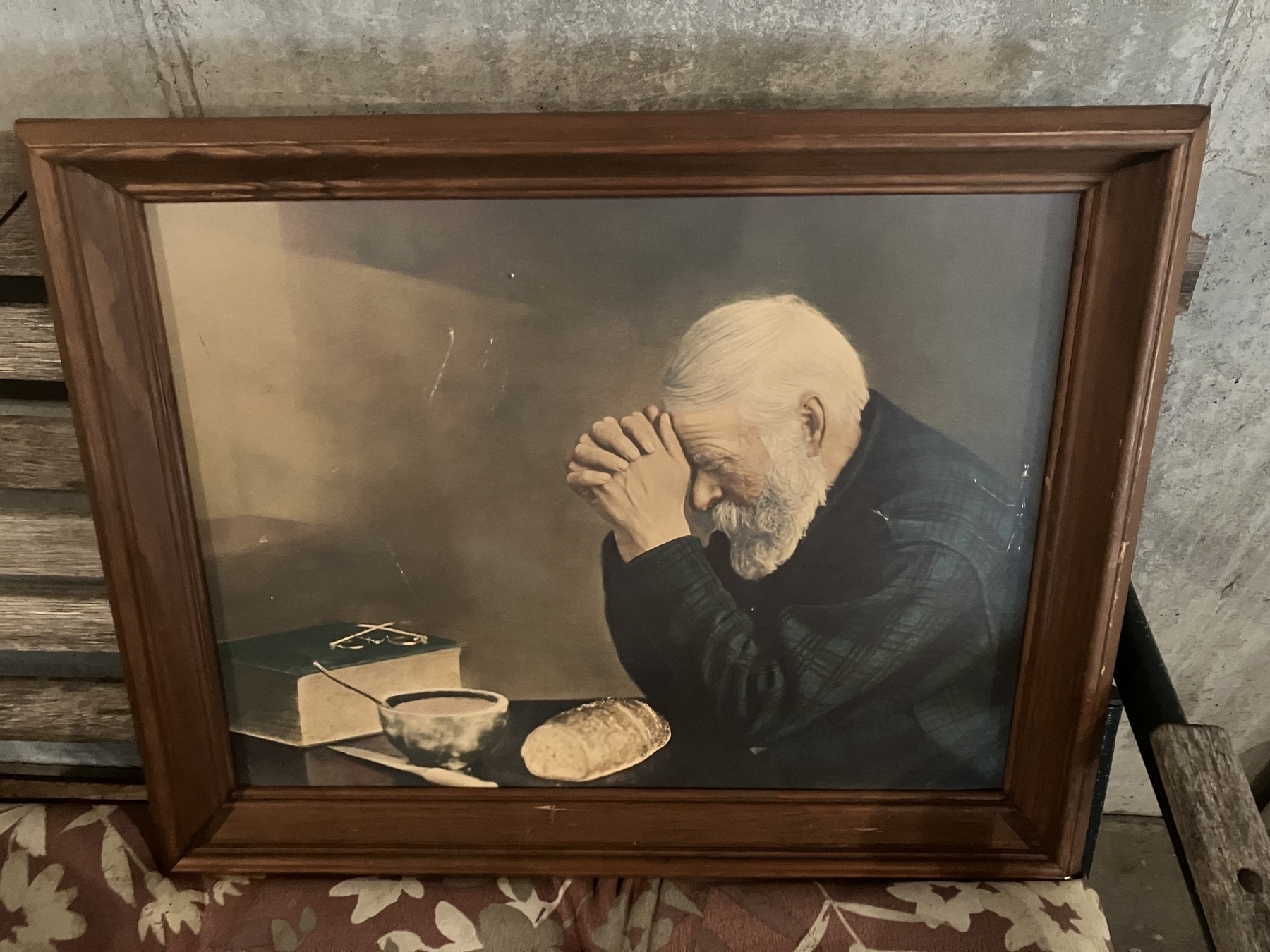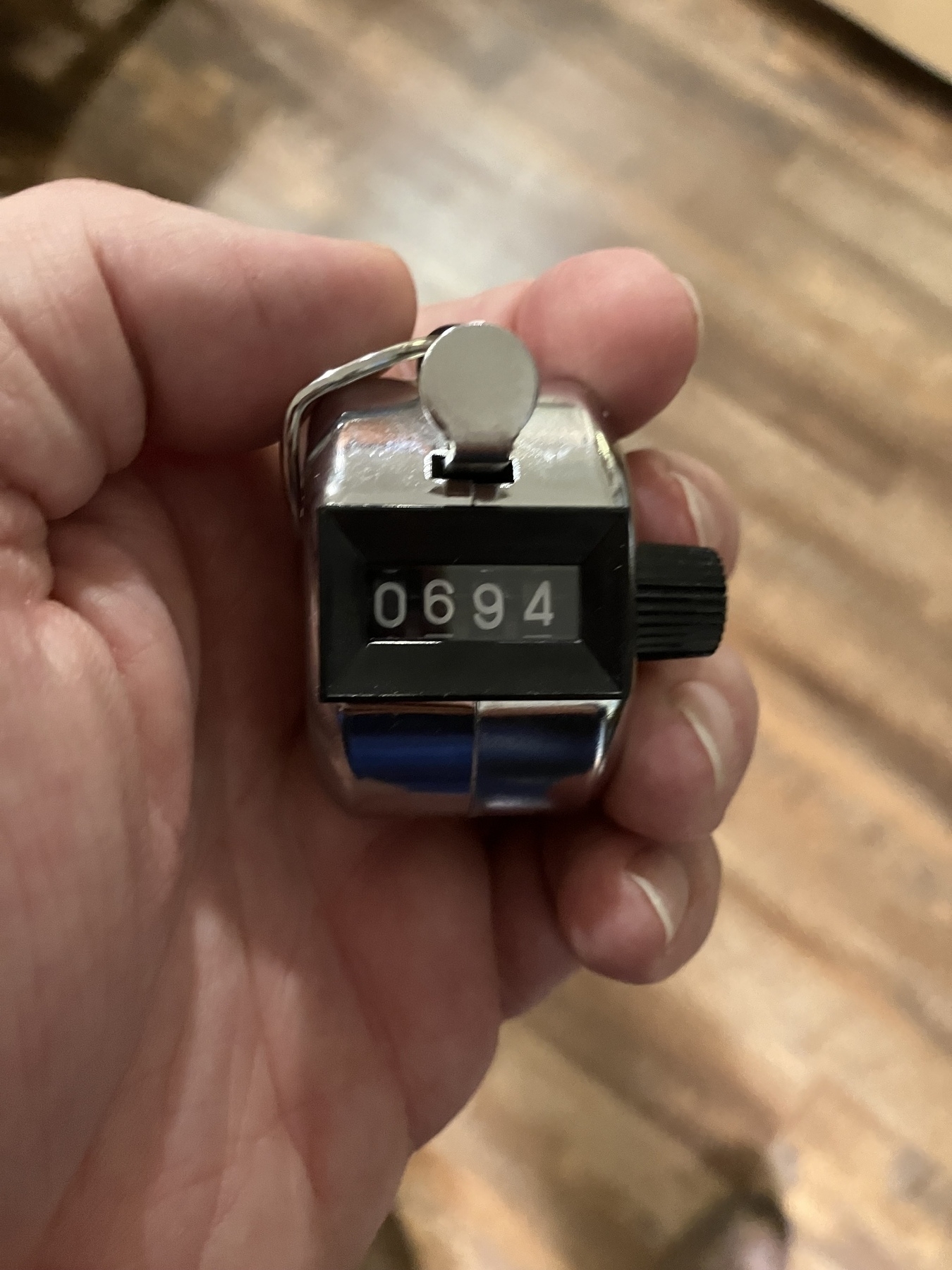Don’t miss @dwalbert’s woodcarving sale from now until November 17. Some truly beautiful work available.
Worth your time: “The Abandoned Americans” by Peter Savodnik.
I am not fragile.
I am one of a species evolved over millennia to be survivors. We have survived every climate and government. We have survived famines and fools. We are adaptable.
I live in a time of rapid change and rampant anxiety. Yet I get up every day and do what must be done. Perhaps through stress and uncertainty and fear, but done nonetheless. I have faced difficult times and yet here I am.
I am a shard of the living cosmos. I am the cosmos conscious, carrying the light forward. I am a light bearing witness to other lights and experiencing darkness.
I may be many things, good and bad, but I am not fragile.
Came across this in my mom’s basement. I think everyone around here had this painting. Rachel’s family also had it and (when she was very young) she thought it was her deceased grandpa.

A few folks have been talking about Dougald Hine’s book here recently so I looked back to see what I had posted while reading it. Of continuing interest:
Watched Heartland (1979) this morning. Wanted something slow and calm, and this fit the bill. Definitely worth your time. Though, be warned, there are a couple of scenes I don’t think the Humane Society would have cleared. But it’s a film about ranching, after all.
Halloween is easily the best night of the year in our neighborhood. It’s like living in an 80s movie. I got a counter to keep track of the number of kids that came through.

thumbs up

I don’t know what mailing list I got put on, but I’ve now received several free issues of Architectural Digest and Bassmaster.
Nick Cave says something I’ve often heard from Christians:
Freedom finds itself in captivity. Disorder, randomness, chaos and anarchy are where the imagination goes to die, or so I’ve found.
So it is with matters of faith and the freeness of belief. I experience a certain vague ‘spiritualness’ within the world’s chaos, an approximate understanding that God is implicit in some latent, metaphysical way, yet it is only really in church - that profoundly fallible human institution - that I become truly spiritually liberated. I am swept up in a poetic story that is both true and imaginative and fully participatory, where my spiritual imagination can be both contained and free. The church may appear to some as small, even stifling, its congregation herdlike, yet within its architecture, music, litanies, and stories, I find a place of immense spiritual recognition and liberation.
Cave appears to be talking about art–but I’ve heard this deployed in other contexts as well. My question, whenever I hear this is always: Do you mean something like the creative freedom that can be found, say, within the sonnet form? Or do you mean that true freedom can only be found within the rule of the Church? The former I can get with. The latter sounds quite Orwellian to those of us who aren’t Christians. Again, I believe I understand what is meant by most of the people who say this sort of thing. The phrasing, though, makes some of us twitchy.